BY AL SCHNEIDER
You can have all the chops in the world, but if the drums don’t sound good, what’s the point? The easiest way to make a drum set sound great is to regularly change out and properly tune the heads.
A good rule of thumb is changing the bottom head every third top head change. Bottom heads aren’t struck, obviously, but they can still go dead.
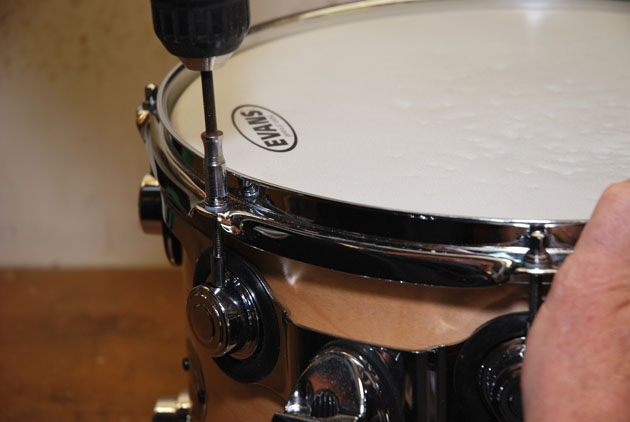
1. Remove the old heads from the drum. Clean any dust or debris from the rims and the bearing edges and, if desired, run a paraffin wax block lightly over the edges. (This helps the head ride smoothly on the bearing edge.)
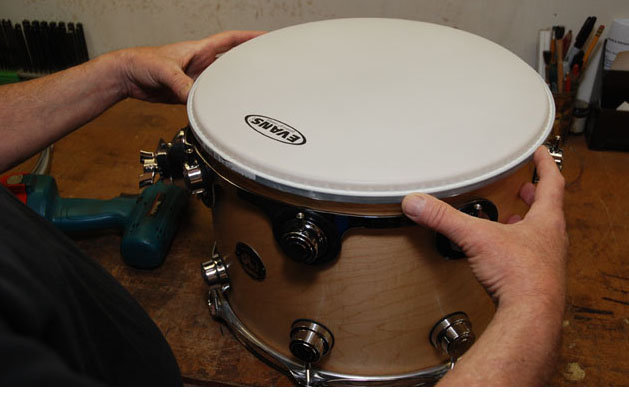
2. Set the drum on a flat surface and place the head and counter hoop on the drum. Make sure the head is centered to insure even tension.

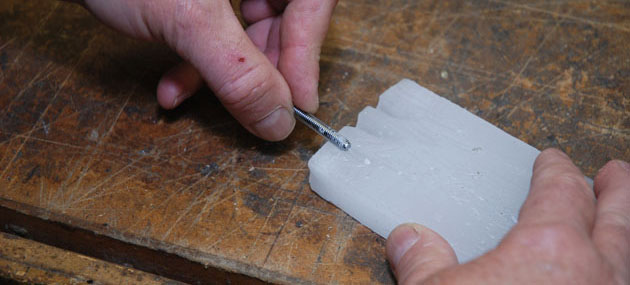
3. Finger tighten the tension rods. This is a good time to lubricate the rods if necessary. I like to use paraffin wax, but silicon, Vaseline, or a light oil will do.
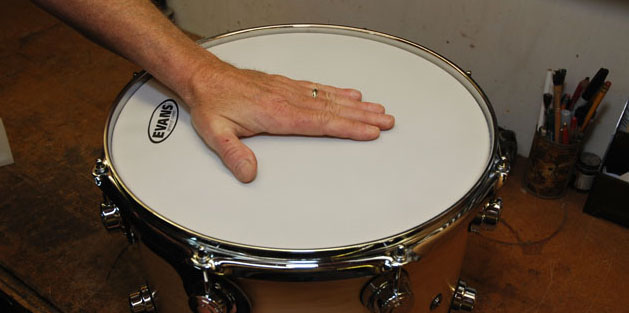
4. Place your palm on the center of the drum and apply pressure. You may hear some popping or glue-cracking sounds, but don’t worry, it’s just the new head seating.
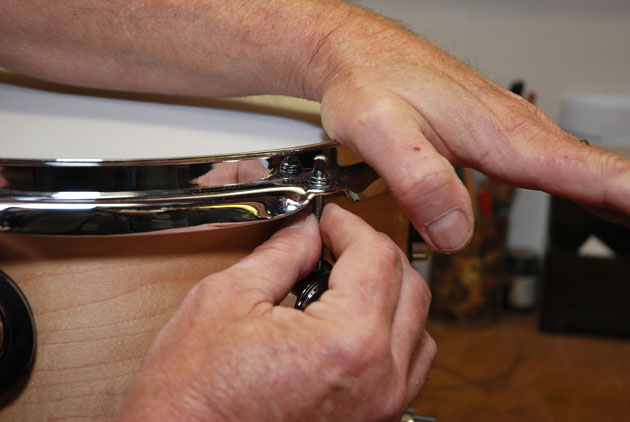
5. Finger tighten the tension rods again, but this time apply light pressure on the hoop above each tension rod as you tighten.
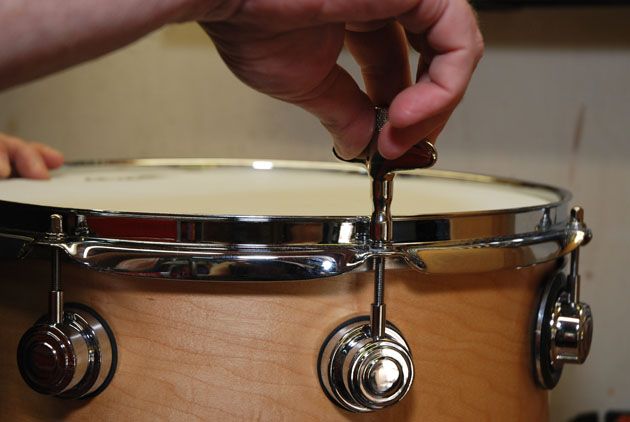
6. Use a drum key to tighten each rod about one half turn. I move around the drum clockwise, but if you like to go in a star pattern that’s cool too.
7. Start with the top and bottom head about the same tension and tune to taste. I find that if I tune up (not down) to the note I want, the drum stays in tune better.
Feel free to experiment, but remember that small tuning adjustments can make big changes in the sound, so listen as you tune. Even if you find a small wrinkle in the head don’t worry as long as the drum sounds good.
One last tip: Tune your smallest and largest tom where you like them, then determine the range of the in-between intervals from there. In my experience there are no rules when it comes to tuning drums, just guidelines. The more often you do it, the better you’ll know what works.
